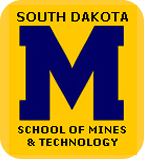 |
|
|
2002 Advisory Board Report Review Date: November 8, 2002 Team Members Present: Mark Benson US Bank Wendy Craig Brush Wellman Stan David Ken McClellan Ray Peterson IMCO Recycling Shane Shawn Veurink RPM (substituting for Robert Mudge) John Walenta Caterpillar Richard Wensel Micron Technology SUMMARY · Plan for the future transition of faculty during the upcoming retirement phase, · Mobilize the departmental Alumni to assist the department in various ways, · Develop a plan on attracting more students, and · Determine methods to allow the faculty limited time to pursue research goals which would benefit the students, the school and the community. Observations by the Advisory Board Strengths: Committed Faculty · Care about teaching · Available to students · Capacity to change as needs vary · Planning for the future · Dynamic individuals Students are well prepared for “Traditional” employment Metallurgical Engineering Program · Unique education not taught in many other institutions · Meets a niche market Department fulfills a Regional / National Need · Widespread placement of graduates Income from Research Improving · Change in philosophy of department Development of Multi-Disciplinary Teams for Junior and Senior Design Class · Application to “Real World” after school New research is bringing money into the department · Improves equipment available in Undergrad Labs Department has a positive impact on the local economy Concerns: Students have limited exposure to broader areas of Materials Science and Processing: · Emerging Fields · Peripheral Fields · Welding Metallurgy · Statistical Process Control Concepts · Advanced Materials Processing · Electronic Materials Exposure to one or two classes in these fields might get a student a job interview that they would not otherwise get. Consider renaming some classes to more accurately reflect content (helps with student marketability) Continued student growth is needed for sustainability of department Alumni are under utilized and could help the department in many ways: · Networking (mentoring, information sources, employment opportunities) · Referral of potential students to SDSM&T · Guidance to students and faculty for research areas and topics relevant to industry · Sources of Equipment · Teaching · Donations High Student / Facility Ratio by comparison to other national Materials Science / Metallurgy Departments Aging Faculty · Succession planning needed Insufficient Resources for Faculty Critical Mass · The department needs to maintain or increase its faculty size and currently there is no available method to do this. Department needs to improve its public relations – salesmanship with potential students, alumni, industry, and the local community An improved Intellectual Property Policy is needed Response: The MetE Advisory Board met November, 2002. Four items of concern were noted by the Board: 1. Plan for the future transition of faculty during the upcoming retirement phase, 2. Mobilize the departmental Alumni to assist the department in various ways, 3. Develop a plan for attracting more students, and 4. Determine methods to allow the faculty limited time to pursue research goals which would benefit the students, the school and the community. What follows are actions taken by the program since the Board meeting. Response to Concern #1 During the 2002-2004 time period the Department Chair met several times with the college Dean and Academic Vice President to discuss transitional planning of faculty. In the spring semester 2004 permission was granted to begin the search process for a replacement for Dr. Stone. Dr. Stone will retire after the spring semester 2005. The search for Dr. Stone’s replacement is on-going. Response to Concern #2 After the Board meeting a 5-year strategic plan was developed. As part of the strategic plan a capital campaign has evolved, with the goal being securing funds to create an endowed chair position. Dr. Everett Bloom (Met E 1963 ) has led this effort for the MetE alumni. Along with the Department Chair, Dr. Bloom has identified key alumni who will also help lead this effort. In addition to the capital campaign, the program has begun regular newsletters, and e-mail lists for alumni. Response to Concern #3 During the 2003-2004 the Department Chair met with his counterparts in Physics and Geological Engineering/Geology. These meetings resulted in the hiring of a part-time recruiter for the various B.S. programs. The recruiter started summer 2004, and it is too early to tell how successful this effort is. In addition to higher the recruiter the program developed a number of hallway displays to heighten the public awareness of the program. These efforts likely will facilitate the recruiting efforts. Response to Concern #4 While not explicitly of concern to the B.S. program a move starting in 2001 toward teaching selected cohorts (Juniors/Seniors) courses in an alternating year sequence has helped address the concern of the Board. In addition, to allowing more time for faculty development the move toward alternate year teaching of core courses has developed camaraderie among students, and optimized class sizes. With respect to the latter aspect, prior to the alternate year teaching sequence program faculty often taught courses to fewer than 10 students. This situation was found to be an inadequate use of resources and also not optimal from a teaching/learning perspective. |